Pre-requisites
This course is limited to US citizens working for US organization or to organizations with approved Technical Assistance Agreements (TAA).

Course Learning Outcomes
Anticipated Course Learning Outcomes
a. Be familiar with:
- Basic aerodynamics typically applicable to airplane upsets in transport category airplanes, including case studies of incidents involving potential or actual upsets.
- Aerodynamics relevant to the airplane and exercises used in the practical training.
- Possible physiological and psychological effects of an upset, including surprise and startle effect.
- Strategies to develop resilience and mitigate startle effect.
- Memorizing the appropriate procedures and techniques for upset recovery.
b. Understand:
- How to cope with the physiological and psychological aspects of dynamic upsets in airplanes.
- The appropriate recovery techniques and strategies and develop the necessary competence and resilience to be able to apply them.
c. Know:
- Strategies to mitigate psychological and physical effects associated with upsets.
- How to recognise upsets.
- How to apply correct recovery techniques from specified upset scenarios.
Topics to be Covered
- Introduction Aerodynamics and Limits
- Propulsion Stability
- Energy Management and Lift Vector Control Basic Maneuver Toolbox
- Recovery Techniques Human Factors
- Environmental and Mechanical Case Studies
- Wrap-Up
Specific Course Information
a. Course Content:
The UPRT courses are developed in accordance with:
b. Academic Lecture Hours are shown in the following table, in the sequence typically scheduled. Course coordinators have latitude to vary the sequence if required.
| Academic Subjects | Hrs |
| Introduction | 0.5 |
| Aerodynamics and Limits | 1.0 |
| Propulsion | 1.0 |
| Stability | 1.0 |
| Energy Management and Lift Vector Control | 0.5 |
| Basic Maneuver Toolbox | 0.5 |
| Recovery Techniques | 0.5 |
| Human Factors | 0.5 |
| Environmental and Mechanical | 0.5 |
| Case Studies | 1.0 |
| Wrap-Up | 0.5 |
| Total: | 7.5 |
c. Instructional Laboratory Hours
|
Laboratories |
Hrs |
|
Egress Training |
1.0 |
|
Cockpit Familiarization – Jet only (Back Seat) |
0.5 |
|
Cockpit Familiarization (Front Seat) |
1.0 |
|
Total: |
2.5 |
d. Reports and Exams
| Reports and Exams | # |
| None | 0.0 |
| Total: | 0.0 |
e. Flying Hours
| Flights | Pilot |
| Heavy Aircraft UPRT (Jet or Turboprop) | 1.0 |
| UPRT Introduction (Optional) | (1.0) |
| UPRT Advanced Handling (Jet or Turboprop) | 1.0 |
| UPRT Advanced Upset (Jet or Turboprop) | 1.0 |
| Total: | 3.0 (4.0) |
Process of Evaluation
In accordance with EASA FCL.745. Advanced UPRT course – aeroplanes, the course is considered to have been satisfactorily completed if the trainee is able to successfully:
- Apply strategies to mitigate psychological and physical effects;
- Recognize upsets;
- Apply correct recovery techniques from specified upset scenarios.
Can’t Find The Courses You Need?
Review our pilot course schedule, request a quote for a custom course or find out more about Flight Research International’s services.
newsletter
Lorem ipsum dolor sit amet, consectetur adipiscing elit. Ut maximus viverra lectus, lacinia mollis velit imperdiet et.
